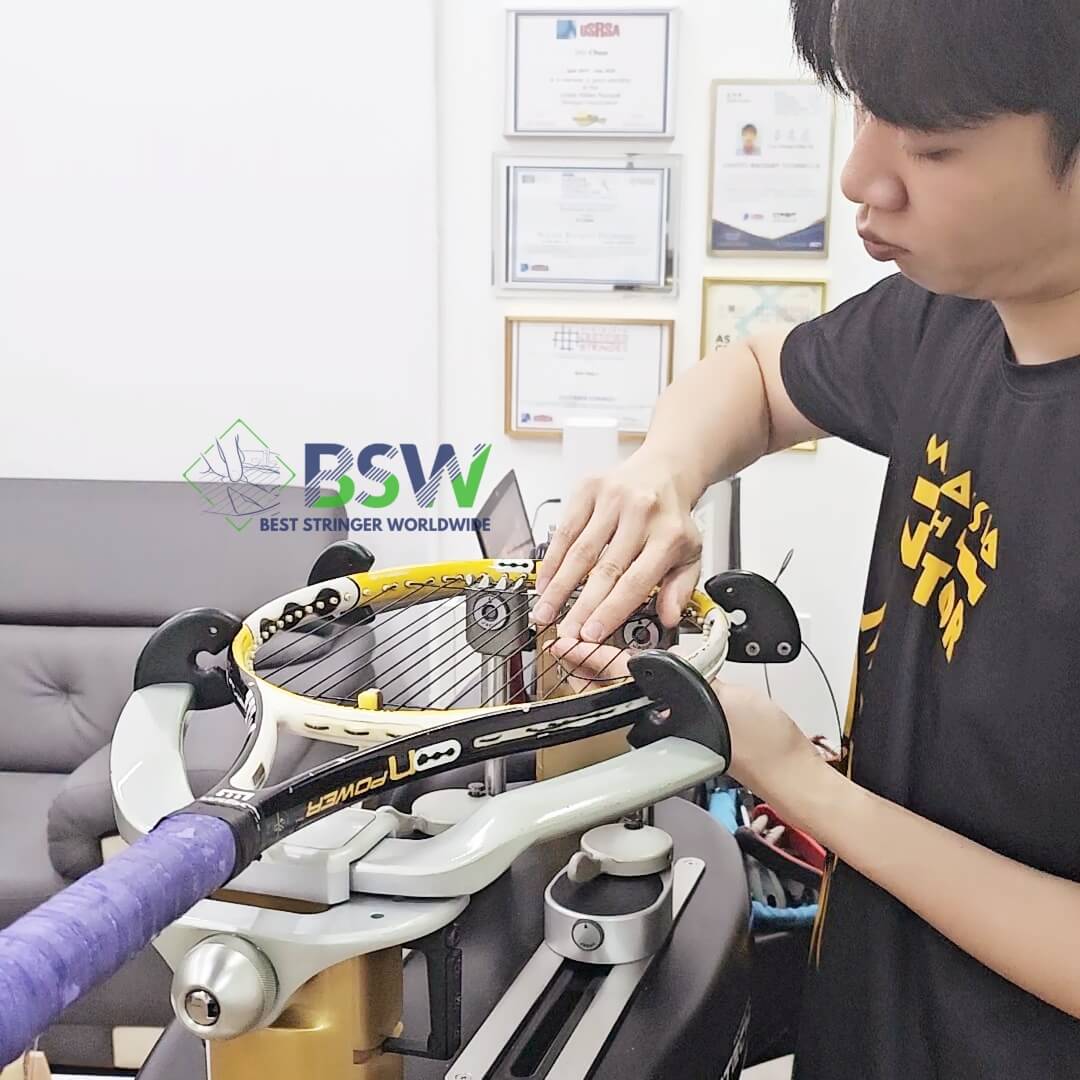Tennis Racquet Performance Analysis: Understanding the Intricacies of Design
Welcome to Best Stringer Worldwide’s (BSW) comprehensive guide on tennis racquet performance analysis. As leaders in racquet stringing education, we’ve created this resource to help players and aspiring stringers understand the nuances of tennis racquet design and its impact on performance. Whether you’re considering our racquet stringing course or simply want to enhance your knowledge of tennis equipment, this guide will provide valuable insights.
The Evolution of Tennis Racquets
Tennis, with its rich history spanning over a century, has been at the forefront of racquet sport innovation. As one of the most popular sports globally, especially in Western countries, tennis racquet technology has consistently led the way in advancements that have influenced other racquet sports.
The larger size of tennis racquets compared to badminton racquets allows for more design innovation. Many technological improvements in racquet sports, including material revolutions, often originate in tennis racquet design before being adopted by other sports.

Key Performance Indicators of Tennis Racquets
While tennis racquets share many performance indicators with badminton and squash racquets, there are some notable differences:
- Y-shaped shaft: Unlike badminton racquets, tennis and squash racquets feature a Y-shaped shaft instead of a straight shaft. This design provides greater face stability without the significant deformation seen in badminton racquets during powerful shots.
- Power generation: Tennis racquets rely more on the racquet face for power generation, whereas badminton racquets, especially during smashes, derive additional power from the shaft’s flexibility.
- Wrist movement: Tennis requires a locked wrist during strokes, contrary to the flexible wrist movements in badminton.
Weight and Balance: The Foundation of Racquet Performance
Tennis racquets typically weigh between 250-350 grams, which is 3-4 times heavier than badminton racquets. The weight distribution of a racquet significantly influences its performance characteristics:
- Head-heavy balance: Shifts the balance point towards the racquet head, reducing maneuverability but increasing power. Wilson’s Hammer Technology utilizes this principle to create lightweight racquets with power-focused performance.
- Head-light balance: Achieved by adding weight to the handle (typically 1-3 ounces), this design improves maneuverability at the expense of some power.
Manufacturers also enhance racquet stability by increasing handle size or adding weight at the 3 and 9 o’clock positions of the frame. These modifications can increase the effective hitting area and improve grip friction.
Tennis Racquet Knowledge Quiz
Tennis Racquet Performance Quiz
1. What is the typical weight range for tennis racquets?
2. Which of the following is NOT a characteristic of tennis racquets compared to badminton racquets?
3. What is the effect of a head-heavy balance in a tennis racquet?
4. Which racquet face size is considered the most versatile and popular?
5. What is Wilson’s Hammer Technology designed to achieve?
Racquet Face Size: Finding the Sweet Spot
Tennis racquets come in various face sizes, each catering to different player needs and skill levels:
- Small (95 sq inches or less): Favored by professional players, these racquets offer a smaller sweet spot but provide concentrated power and precise control for skilled players.
- Medium (96-100 sq inches): The most versatile and popular size, suitable for players of all levels.
- Large (100-115 sq inches): Offers a larger sweet spot and more power, ideal for beginners or players with less strength.
- Oversize (115+ sq inches): Provides the largest sweet spot and highest power, best for beginners, seniors, or players prioritizing comfort over control.
| Racquet Face Size | Sweet Spot | Power | Control | Suitable For |
|---|---|---|---|---|
| Small (<95 sq in) | Small | Concentrated | High | Advanced players |
| Medium (96-100 sq in) | Medium | Balanced | Good | All levels |
| Large (100-115 sq in) | Large | High | Moderate | Beginners, recreational players |

About Best Stringer Worldwide
Best Stringer Worldwide is a comprehensive badminton and tennis stringing education program. We provide in-depth training on stringing techniques, racquet technology, and player-specific customization. Our curriculum is designed to help stringers understand and meet the needs of all badminton players, from casual enthusiasts to competitive athletes.
Read More